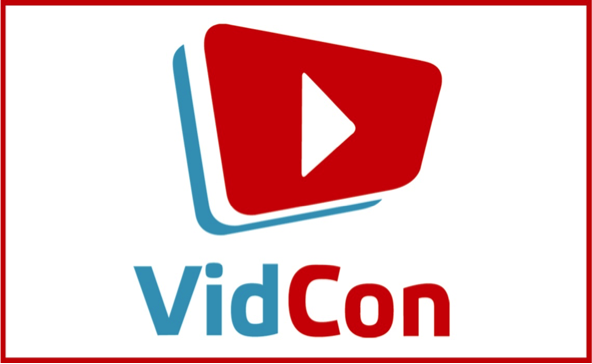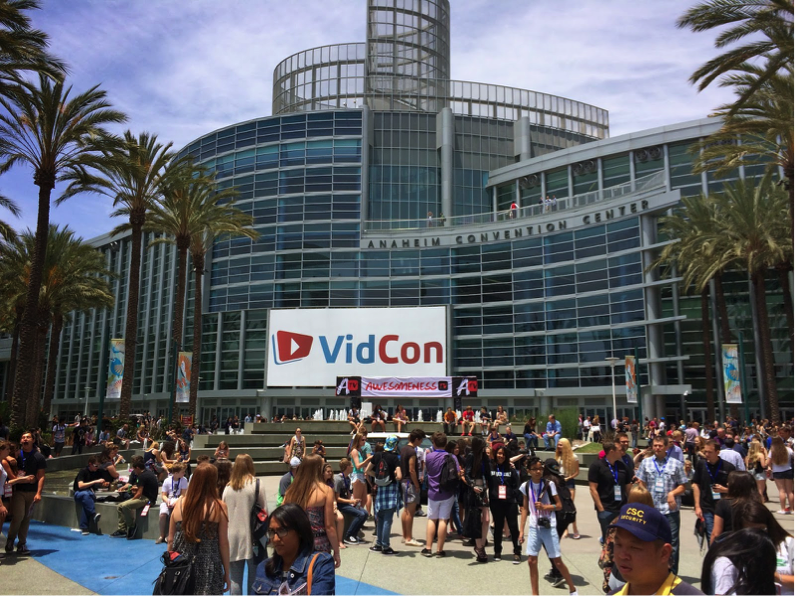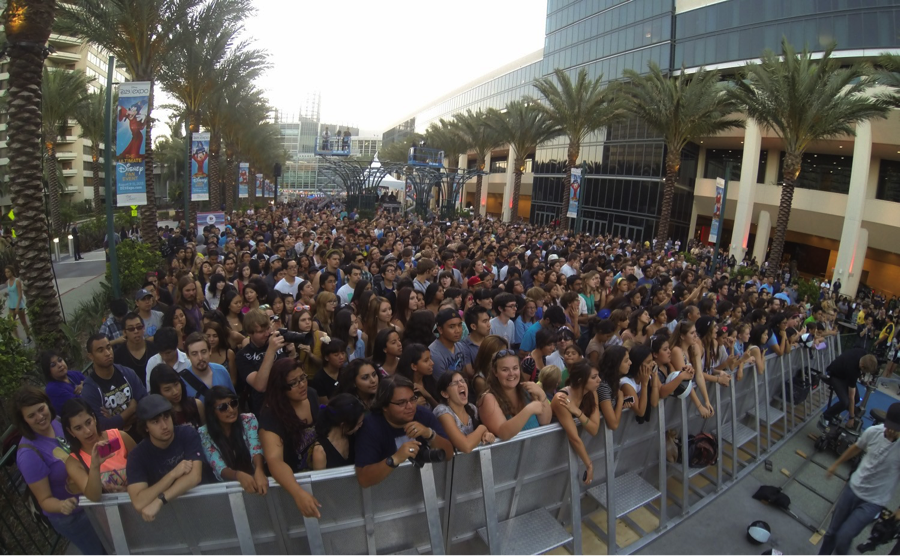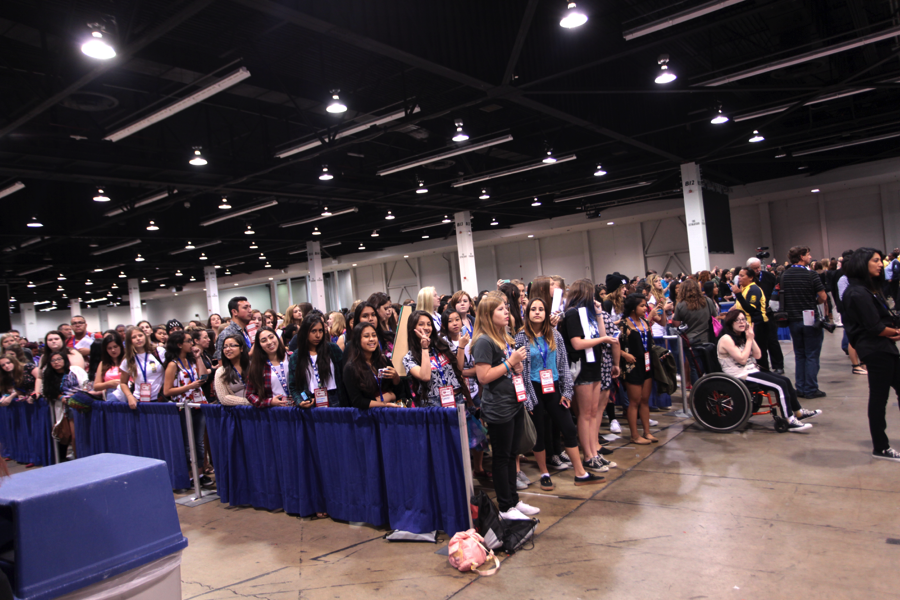
Image courtesy Tubefilter
By: Amanda Drum
VidCon returned to Anaheim, CA for its sixth year in celebrating online video content creators (better known as YouTubers). The event has grown since its 2010 launch, thanks in part to VidCon keynotes and talks by the likes of John Green— conference founder Hank Green’s brother and author of The Fault in Our Stars and Paper Towns—Yahoo! correspondent Katie Couric and YouTube CEO Susan Wojcicki. Even industry giants like Universal Studios got on board at the formerly niche event, letting fans interact with new movies like Jem and the Holograms via a hologram photo booth built by Venice creative studio Heresy in conjunction with VNTANA.

The Hologram photo booth
At the deafeningly loud and teen-filled industry conference, growing mobs of fans meet their beloved creators, fostering squeals of delight and thousands of selfies. On a more serious note, industry professionals host panels to dissect the key question: how does one market YouTube success and streamline that success into other endeavors with brands and beyond?

Image courtesy The Video Ink
The 6th annual conference hosted upwards of 300 YouTube personalities, professionals and influencers. Thousands of enthusiasts and fans gathered to learn more about the growing digital space that has been swiftly altering the worlds of entertainment and advertising.
The top YouTube stars commanded their own interviews and panels throughout the conference. YouTuber Korey Kuhl interviewed long-time creator Tyler Oakley, author of Binge and co-host of podcast Psychobabble, who engages with 7,190,174 viewers and has so far earned 438 million views and counting. The viewer-named “Holy Trinity” of YouTube, creators Grace Helbig, Mamrie Hart and Hannah Hart (no relation), presented their own Q&A panel and joined other panels of various topics. Their YouTube channels have each cultivated over ten million views apiece and they have all appeared in their own movie productions. Additionally, they each produced respective New York Times best-selling books. Many other YouTubers in attendance boast millions of subscribers and their own authoring experiences, including Colleen Evans (Miranda Sings), Connor Franta (ConnorFranta), Joey Graceffa (JoeyGraceffa) and Louise Pentland (Sprinkleofglitter).

Image courtesy bryanallen.com
VidCon’s mission: to recap and re-examine how hundreds of thousands of aspiring content creators—and of those, a few shining stars—use the digital space in advancing ways and what this means for the role of content in media. Each year, revisiting the question becomes a more arduous task as new accomplishments from the YouTube website and their creators break formerly steadfast media barriers. How do YouTube stars build an “empire?” What are vloggers’ responsibilities to younger audiences? How can one make this a viable business model?
YouTube content creators have, over the past few years, ventured from making web videos to publishing books, appearing in (or hosting) TV shows, headlining conferences, covering red carpet events and more. The eldest YouTube stars possess a strong enough CV to take their careers to television, or the big screen, without a backwards glance. On the flipside, emerging creators must navigate a channel space far more saturated than ever before, for viewers, “likes” and a foothold in an online career.
Here, marketing professionals and other companies found their niche. Thursday, July 23, the entrepreneur managing company GBox hosted an event centered specifically on monetizing YouTube videos and other video content. It’s no secret: YouTube users can earn ad revenue on successful videos and accept sponsorships to feature products on their channels. Content creators often vet these products and choose the best fits for their channels. At the moment, however, larger channels cultivate a sponsorship monopoly. GBox hopes to address the issue by producing a subscription-based site, where budding video creators can publish exclusive “extra” content on their website for a subscription fee. Content creators can use this subscription service as a more steady way to earn the same revenue they could earn from ads or sponsors. This new monetizing angle is just one byproduct of a swelling income possibility for content creators, business professionals and their constituents alike.

Image courtesy Gage Skidmore, Flikr
VidCon is an undoubtedly cemented event for video creators and web marketing. No one, including the conference’s originators, knows where it will go from here. The future of VidCon and online content creation rests on the teen and twenty-something creators themselves; their world could change overnight with emerging technology and opportunity.